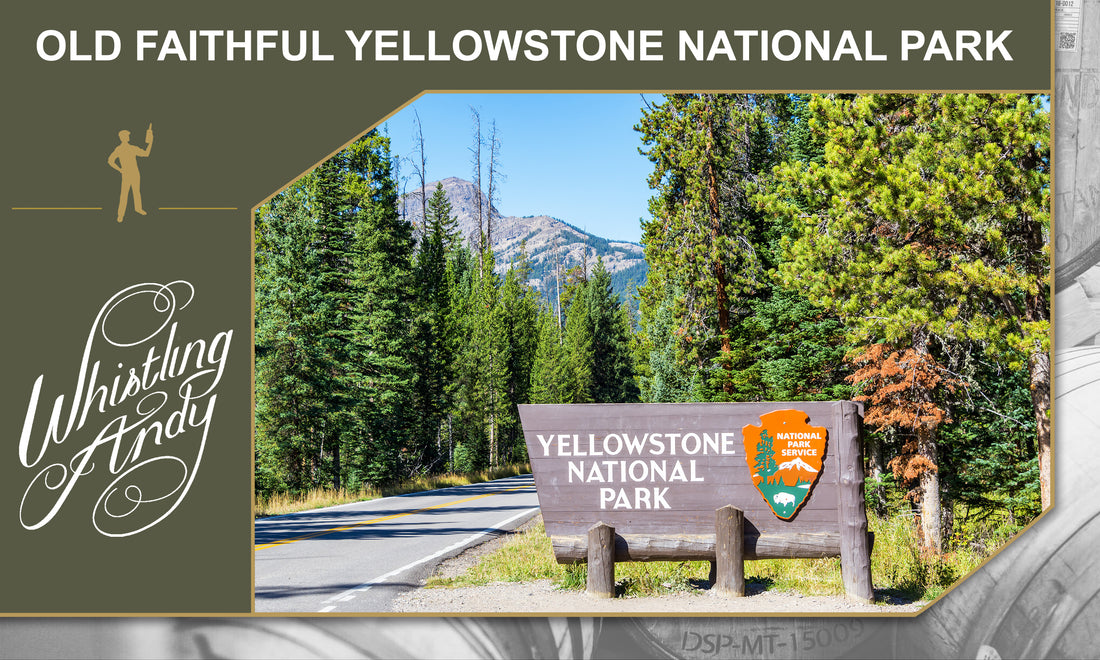America’s first national park, Yellowstone — which sprawls over nearly 3,500 square miles in Wyoming, Montana, and Idaho — is home to more than half of the world’s geysers. Over 500 can be found within the boundaries of Yellowstone, and 150 of those natural wonders are located within just one square mile in the park’s Upper Geyser Basin.
From those statistics, you might think that witnessing the eruption of one geyser in Yellowstone would be just as unique as any other, but you would be mistaken. Millions of people from around the planet travel to Wyoming each year to personally witness the eruption of Old Faithful, which is arguably the world’s most famous geyser.

Though it might not be the largest or tallest geyser in the world, or even in Yellowstone, Old Faithful’s predictable eruptions have kept scientists and curious visitors rapt with wonder for well over a century and a half, and there is little doubt that interest will continue as long as the geyser continues to erupt.
Discovering the Geyser
Though it is very likely that indigenous tribes knew about the wonder of Old Faithful long before European settlers arrived in the area, the geyser was “officially discovered” in 1870 by members of the Washburn–Langford–Doane expedition and named by Nathaniel Langford.
When the explorers encountered the geyser, Langford noted that it erupted nine times during their stay, all at regular intervals. It was from the predictable intervals between eruptions that Langford derived the geyser’s name. That name and, for the most part, the geyser’s predictability have stood the test of time.

Old Faithful was the first officially named geyser in what is now known as Yellowstone, and the natural phenomenon was a significant deciding factor in making this America’s first national park.
Though now one of the most beloved and revered landmarks in the country, it’s amusing to note that those who first encountered Old Faithful used it to wash their clothes. They would put their dirty laundry in the mouth of the geyser and wait for the next eruption to expel their clean garments. Apparently, this laundry method worked well as long as the garments were not made from wool which were reported to have been obliterated by the water’s tremendous heat.
Stats About Old Faithful
After being studied extensively, Old Faithful was officially classified as a cone geyser, where the narrow “cone” is formed by silica deposits at its opening. This constricted vent acts like a nozzle, causing the water to shoot up into the air in impressive jets. On average, those jets of geothermically heated water reach 130–140 feet in height, though they can sometimes be as small as 90 feet high or as tall us over 180 feet.

Since the creation of Yellowstone National Park in 1872, Old Faithful has erupted over 1,000,000 times. The geyser expels an average of 3,500–8,500 gallons of water that is heated up to 200 degrees with each eruption and the steam has been recorded to average an astounding 350 degrees Fahrenheit!
How Faithful Is Old Faithful?
Generally speaking, it is challenging to predict when a geyser will erupt. Old Faithful is only one of six in the area whose eruptions can be expected with any certainty.
Since the geyser’s eruptions began to be recorded, their predictability has fluctuated a bit, but, by and large, they can still be predicted with 90% certainty.
Today, Old Faithful erupts around every 90 minutes — 30 minutes longer between eruptions than in the 1960s.

While there are various theories about what has caused the increase in times between eruptions, the account that holds the most weight is that it is due to seismic activity in the area.
Another viable theory is that area rainfall can be factored into the differentiation in times between eruptions. Statistically, more rain causes a slight decrease in time, and less rain causes a slight increase in time.
If the length of the eruption is short, lasting less than 2.5 minutes, then statistics show that the time between eruptions will be faster than average, sometimes around 60 minutes later.
The beauty and wonder of Old Faithful continue to bring visitors to the park to witness its glory firsthand, and there is nothing to suggest that its predictable eruptions may soon be a thing of the past. However, it should be noted that ever-changing conditions could cause witnessing Old Faithful's glory to be only discussed in history books.
Visiting Old Faithful
Visiting Old Faithful in Yellowstone National Park can be an added stop on an adventure to Wyoming, or it can be a destination in and of itself.
If visiting the geyser during peak season, from the spring to the end of summer, expect to compete with hundreds of other onlookers to catch a glimpse of its famous spray. To avoid the largest crowds during this season, plan to visit one of the viewing areas before noon or after 6:00 PM. Planning a trip outside of peak-season would be optimal for avoiding crowds; however, you may then be competing with nature, as the conditions around Old Faithful can be harsh during the snowy season.

The Old Faithful Visitor Education Center offers tourists a way to learn more about the geyser as well as other geological sites in Yellowstone National Park. From videos to exhibits to guided area tours, the Center offers something to accommodate just about any visit to Old Faithful.
You can also stay at The Old Faithful Inn, a historic National Historic Landmark that is sure to make any visit to the geyser a memorable one. A stay at the rustic log structure is perfect for anyone who wants to have the area’s natural beauty at their fingertips with all the creature comforts.
Old Faithful in Yellowstone National Park: A Sight to Behold
Yellowstone National Park offers countless areas of natural beauty for visitors to see. There is no shortage of geysers in the park and there is no doubt that witnessing any of their eruptions will leave onlookers with memories that will last a lifetime.

But while there may be hundreds of these wonders to behold the world over, there is only one Old Faithful.
Old Faithful is a legendary landmark that offers visitors a look at a natural geological wonder and is a true sight to behold.





